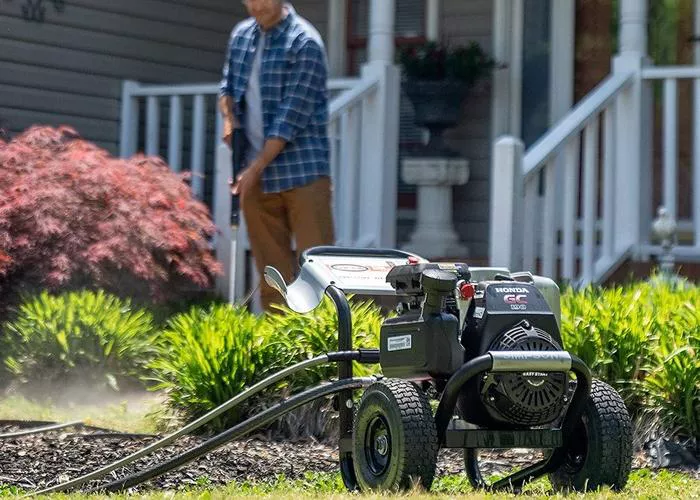Keeping your car clean is essential not only for aesthetics but also for maintenance. Dirt, grime, and road salts can cause long-term damage to your vehicle’s paint and undercarriage. A pressure washer is one of the most efficient tools for cleaning cars, but selecting the right one can be challenging. With numerous models available, it’s crucial to understand their features, specifications, and how they impact car washing.
This article provides an in-depth guide to choosing the best pressure washer for cars, including the different types, their pros and cons, and key considerations before purchasing one.
1. Understanding Pressure Washers
Pressure washers are powerful cleaning tools that use high-pressure water to remove dirt, grease, and debris from surfaces. They operate by forcing water through a nozzle at high speed, generating significant cleaning power with minimal effort.
Pressure washers are categorized based on their power source and pressure output:
- Electric Pressure Washers
- Gas Pressure Washers
- Cold Water vs. Hot Water Pressure Washers
- Portable vs. Stationary Pressure Washers
Each type has distinct advantages and drawbacks when it comes to cleaning cars.
2. Types of Pressure Washers for Car Washing
Electric Pressure Washers
Best for: Home use, occasional car cleaning, environmentally conscious users.
Electric pressure washers are the most common choice for car owners due to their convenience and affordability. They are lightweight, easy to use, and require minimal maintenance.
Advantages:
- Lightweight and portable.
- Quiet operation.
- No emissions (environmentally friendly).
- Easy to store and maintain.
- Typically lower PSI (pounds per square inch), reducing the risk of paint damage.
Disadvantages:
- Less powerful than gas models.
- Requires a power source and cord, limiting mobility.
- Not ideal for heavy-duty cleaning tasks.
Gas Pressure Washers
Best for: Professional car detailing, frequent use, cleaning stubborn dirt and grime.
Gas-powered pressure washers are more powerful than electric models, making them suitable for tackling tough stains and dirt. However, they require more maintenance and are heavier.
Advantages:
- Higher PSI and GPM (gallons per minute), providing more cleaning power.
- No need for an electrical outlet, allowing greater mobility.
- Ideal for commercial use or frequent car washing.
Disadvantages:
- Louder and heavier than electric models.
- Requires fuel, making it less eco-friendly.
- Can be too powerful for delicate car surfaces.
- Requires regular maintenance (oil changes, fuel refills, etc.).
Cold Water vs. Hot Water Pressure Washers
Cold water pressure washers are commonly used for car washing since they effectively remove dirt without damaging the paint. Hot water pressure washers are better for cutting through grease and oil but are typically not necessary for regular car cleaning.
Portable vs. Stationary Pressure Washers
Portable pressure washers are ideal for car washing as they allow flexibility and convenience. Stationary models are more powerful but are primarily used in professional settings where multiple vehicles are washed frequently.
3. Key Factors to Consider When Choosing a Pressure Washer
PSI (Pounds per Square Inch)
PSI measures the pressure of the water coming out of the nozzle. For car washing, a pressure washer with 1,200 to 1,900 PSI is recommended. Anything higher can potentially damage the paint.
GPM (Gallons per Minute)
GPM indicates the water flow rate. A higher GPM means more water is used, leading to faster cleaning. For cars, a pressure washer with 1.4 to 1.6 GPM is typically sufficient.
Nozzle Types
Different nozzles provide various spray patterns and pressure levels. The best nozzles for car washing include:
40-degree nozzle (white tip): Wide and gentle spray for general washing.
25-degree nozzle (green tip): Medium pressure for tougher dirt.
Soap nozzle (black tip): Designed for applying detergent.
Avoid using 0-degree nozzles (red tip) as they can damage the paint.
Hose Length and Material
A longer hose (25-50 feet) provides greater flexibility, allowing you to clean without moving the machine frequently. High-quality rubber or reinforced hoses last longer and resist kinks.
Detergent Compatibility
Look for a pressure washer with a detergent tank or a foam cannon attachment to apply car soap effectively. Using car-specific detergents ensures safe and efficient cleaning.
Portability and Storage
Consider the weight and size of the pressure washer. Compact and lightweight models are easier to maneuver and store.
4. Recommended Pressure Washer Brands for Car Washing
Several brands offer reliable pressure washers for cars. Some of the best options include:
Sun Joe SPX3000 (Electric, 2,030 PSI, 1.76 GPM) – Affordable and efficient.
Karcher K5 Premium (Electric, 2,000 PSI, 1.4 GPM) – Durable and user-friendly.
Greenworks 2000 PSI Pressure Washer (Electric, 2,000 PSI, 1.2 GPM) – Budget-friendly.
Simpson Cleaning MSH3125 MegaShot (Gas, 3,200 PSI, 2.5 GPM) – High-power, commercial-grade performance.
Ryobi RY141612 (Electric, 1,600 PSI, 1.2 GPM) – Compact and lightweight.
5. Best Practices for Pressure Washing a Car
To prevent damage and ensure effective cleaning, follow these steps:
- Pre-rinse the car to remove loose dirt.
- Apply detergent using a soap nozzle or foam cannon.
- Let the soap sit for a few minutes to break down grime.
- Use a microfiber mitt or soft brush for stubborn spots.
- Rinse thoroughly with a 40-degree nozzle.
- Dry using a microfiber towel or air blower to prevent water spots.
Conclusion
Selecting the right pressure washer for your car depends on factors like power source, PSI, GPM, portability, and additional features. Electric pressure washers are best for home use, while gas-powered models suit professional detailing. Always use the correct nozzle and follow proper washing techniques to maintain your car’s finish.
With the right pressure washer, car washing becomes a quick, effective, and satisfying task. Investing in a quality model ensures long-term benefits, keeping your vehicle looking pristine while protecting its paint and components from dirt and damage.

